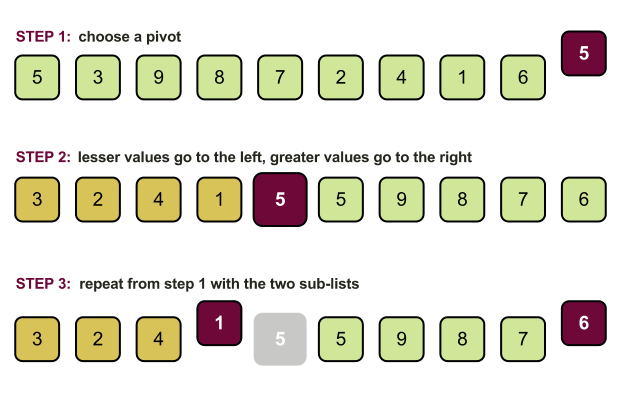Introduction
When it comes to sorting items by comparing them merge sort is one very natural approach. It is natural, because simply divides the list into two equal sub-lists then sort these two partitions applying the same rule. That is a typical divide and conquer algorithm and it just follows the intuitive approach of speeding up the sorting process by reducing the number of comparisons. However there are other “divide and conquer” sorting algorithms that do not follow the merge sort scheme, while they have practically the same success. Such an algorithm is quicksort.
Overview
Back in 1960 C. A. R. Hoare comes with a brilliant sorting algorithm. In general quicksort consists of some very simple steps. First we’ve to choose an element from the list (called a pivot) then we must put all the elements with value less than the pivot on the left side of the pivot and all the items with value greater than the pivot on its right side. After that we must repeat these steps for the left and the right sub-lists. That is quicksort! Simple and elegant!


